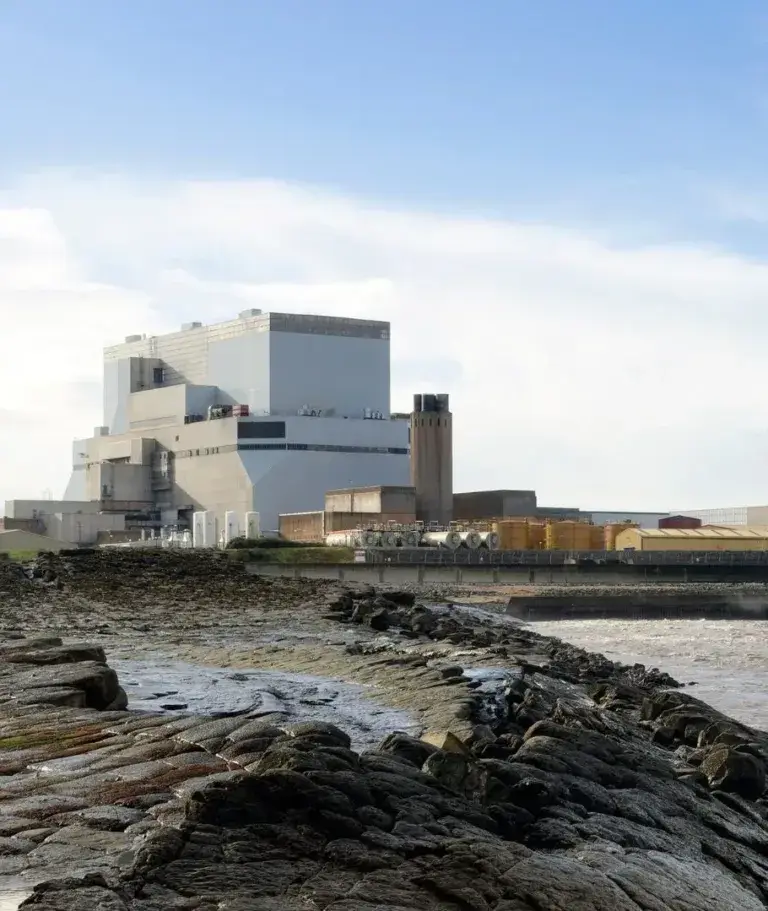Acoustic fish deterrents (AFDs) have become the most effective way to guide and deter fish from estuarine cooling water intakes and have recently been scrutinised by the UK Government in a public inquiry, and an advisory group for the Welsh Government.
Fish Guidance Systems (FGS) creates its complex proprietary sound signals with frequencies that maximise the range of species that the AFD can deter.
This not only helps sustain populations but also prevents disruption to facilities such as power stations that primarily use physical screens to filter out weeds and other debris. Even where fish recovery and return systems are provided to put fish back to sea, only the more robust species are likely to survive.
Fragile species, which only survive if they can be diverted from the water Intake Heads, make up the majority of fish drawn in by coastal power stations. In the case of Hinkley Point C, AFDs are an aspect of the Secretary of State’s Development Consent Order (DCO) and the Environment Agency stated there is a “high dependency on the proposed mitigation systems,” which include AFDs.
Meeting the Requirements of the DCO
FGS has installed more than 120 sound-based behavioural systems over the course of 30 years. The company is committed to developing new technology that helps conserve fish stocks and prevent damage to plants and other facilities.
The DCO requires an AFD to be used at Hinkley Point C in combination with a low-velocity side entry (LVSE) intake and a Fish Recovery and Return (FRR) system.
The LVSE is installed with openings perpendicular to the tidal flow to discourage fish from entering the pipes of the intake. Low design water velocities are intended to help even very small fish escape entrainment. The LVSE is an unproven technology and has never been installed on a plant of this type before, hence the need for an Acoustic Fish Deterrent.
The strong tides in the Severn Estuary transport an exceptionally high silt burden, giving zero visibility for fish under most conditions. Without the warning signal provided by the AFD, approaching fish may not be able to detect and avoid the intakes until it is too late.
“The use of an AFD in combination with a low velocity intake is intended to deflect the more fragile hearing-sensitive species that are unable to survive passage through the tunnels and water channels, or handling by the cooling water screens.” — Dr. Andrew Turnpenny, Fisheries Scientist and Co-founder of FGS
Our Latest Acoustic Fish Deterrent News

Nuclear power plant constructors undermine environmental protection measures
In an open NNB Generation Company (HPC) Limited letter that explores changes toMaisemore Weir as an alternative to the already approved Acoustic Fish Deterrent (AFD) at HinkleyPoint C, the company flagrantly disregards and negates the proven science and technology which wouldprevent catastrophic environmental implications such as the death of 182
Moved Saltmarsh Won’t Save 182 million Fish Per Year: The Best Solution Remains The Acoustic Fish Deterrent
After the public consultation back in January, EDF is now looking at alternative and less desirable saltmarsh locations after public rejection from residents, environmentalists, and a report from the Environment Agency. The answer to the problem continues to be the Acoustic Fish Deterrent. Video regarding Salt Marshes The saltmarsh, while

Overview of the Environment Agency’s Response to EDF’s Plans to Remove AFD from Hinkley Point C
In early June, The Environment Agency provided a response to the Hinkley Point C Development Consent Order Material Change consultation. The Environment Agency mission is to ensure that Hinkley Point C (HPC) operates to high environmental standards and states that it will continue to engage with EDF to achieve this.

The Benefits of Using Acoustic Fish Deterrents at Nuclear Power Plants: Insights from Doel Nuclear Power Station
Acoustic Fish Deterrent systems have been used at coastal power plants for nearly thirty years. Operated by Electrabel,the Doel Nuclear Power Station, situated on the River Scheldt near Antwerp, Belgium, comprises four pressurised water reactors (PWRs) with varying capacities. The Acoustic Fish Deterrent (AFD) system is installed exclusively on the